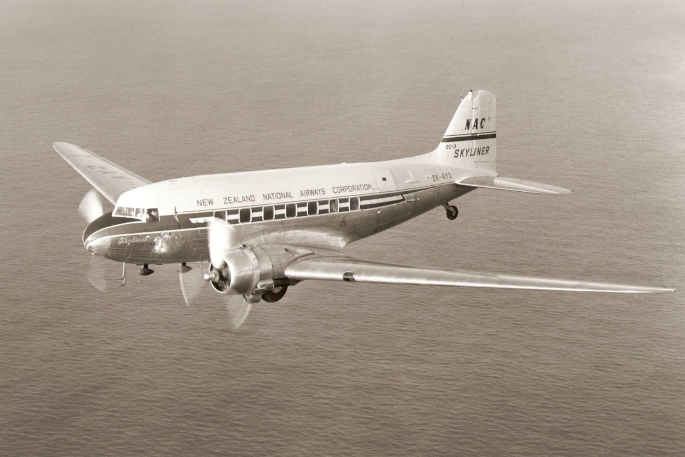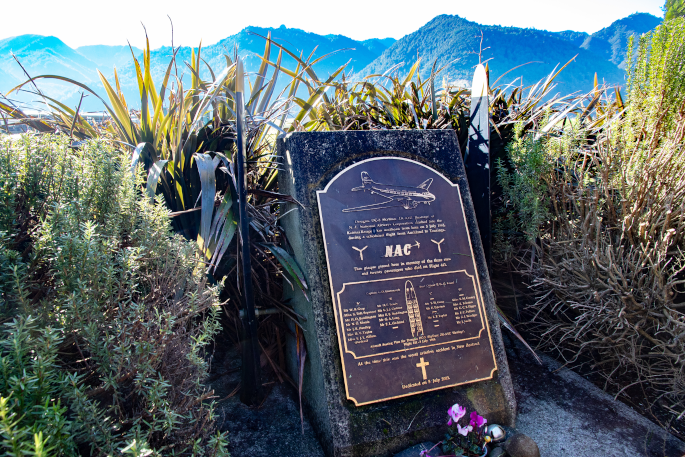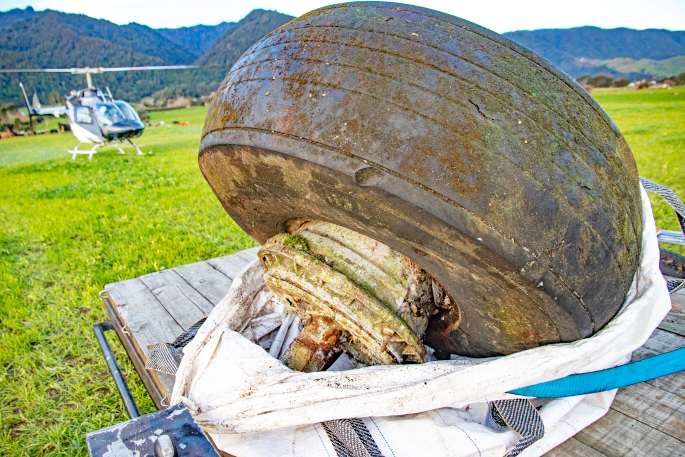'Tauranga, this is AYZ. We're two minutes out.”
The fateful final radio communication from an NAC DC3 Skyliner en route from Auckland to Tauranga at 9.06am on July 3, 1963. 'Request descent to 4100.”
It was a lousy day – cloud was down, winds were up and it was raining a storm. Five-thousand feet below a Gordon schoolteacher heard an aircraft, followed by a dull crash – 'like a door slamming”. Then eerie silence.
Flight 441 disintegrated when it ploughed into a vertical rock-face high on the Kaimai Range. Three crew and 20 passengers perished in what would still be New Zealand's worst ever internal air disaster.
'Two minutes out” became 60 years. And then this week, it was as if Flight 441 had finally arrived in Tauranga, she had come home, reached her destination.
'It's mangled piece of steel as you would expect. But it's important. It's the heart of an aeroplane,” says Andrew Gormlie, CEO of Classic Flyers, and the man whose volunteer team brought 441 home.
The mangled piece of steel is the remains of a cowled 1100hp Pratt & Whitney radial piston engine in a ravine on the Kaimai Range. The engine, one of two that powered the DC-3, had fallen clear of the accident site on impact, and over time rolled down the steep slope before wedging between rocks.

The NAC (forerunner to Air New Zealand) DC-3 Skyliner ZK-AYZ - photographed only a few months before the accident. Photo: Mannering & Associates via Richard Waugh.
Waiting 60 years
'It still represents an engine, you can see the cylinders and the crank case. But it's certainly weathered; looks like it's been waiting 60 years in the bush.” A solemn and shattered reminder of a dark and tragic episode in our aviation history.
And the engine will be given dignity – housed in a commemorative display area, a shrine, in the main hanger of Classic Flyers, with photographs of the victims, video images and the story of the crash told carefully and accurately.
'We have to be mindful and respectful. It will be treated with reverence,” says Andrew.
Probably because the salvage has been a sensitive issue for 20 years – it's often been talked about but never acted on. There have been those who have said ‘leave well alone', that the crash site is hallowed ground, ‘let's remember without interfering'.
'We certainly don't want to offend,” says Andrew. 'But time always heals and it's now less of a raw wound.”
And the museum believes it's imperative the DC-3 wreckage be salvaged now. 'It won't be a decade or two before the crash will have passed from the national consciousness, and bits and pieces still scattered on the ridge, will be gone,” says Andrew. ”It won't matter to new generations. I sense that already.”
Now there will be something tangible to keep the memory alive. 'A lest we forget factor,” says Andrew.
The day of the salvage last week, and the Kaimai Range was a picture – raw and rugged, bathed in sunshine, but still bloody minded. Because it refuses to surrender the engine.
The ground crew at the crash site have the engine in a strop but it's firmly lodged – the chopper can't lift it.
‘Bugger' factor
'A bit of the ‘bugger' factor,” says Andrew. 'A bit disappointing.” Cheated but not beaten – they'll regroup and bring in some more muscle, a bigger chopper when the weather improves and they can access the site.
In the meantime ground crew at the crash site secured another prize – the museum salvage team won't go home empty-handed. It's the DC-3's rear wheel assembly – lifted out of the ravine and now sitting on a trailer for the trip to the museum.
'A marvelous prize – still whole and in comparatively good order considering what it's been through.” There's a significant rupture in the tyre. 'Accident damage,” says Andrew. 'Impact damage.” Classic Flyer's memorial to the Kaimai air crash is slowly coming together.

The national memorial commemorating the Flight 441 disaster. Stand here on the Old Te Aroha Rd, and on a good day, gaze 4km north-east into the distance, and there, high on the ridge, is the crash site. Photo: Bob Tulloch.
What caused the crash? Insufficient altitude, navigational problems and ferocious winds were crucial factors. The 70-80 knot winds, much stronger than forecast, caused the plane to drift west of the planned route.
Inquiry
A court of inquiry would find the pilot probably thought he had cleared the ridge, that he was on the eastern side or Tauranga side of the Kaimai Ranges and had begun his descent to Tauranga from the wrong position.
There was also the possibility radio compasses were not operating reliably in the ugly weather, and that DME or Distance Measuring Equipment couldn't assist the crew as there was no equivalent equipment in Tauranga. It was installed shortly after the crash.
The Kaimai Range was also notorious for its down current – and on this day probably 2000 feet a minute. In his book, ‘Kaimai Crash' author and aviation historian Rev Dr Richard Waugh wrote: 'Captain Len Enchmarch and First Officer Peter kissel applied additional power to arrest the descent and gain more height but to no avail. Just as quickly as the DC-3 plunged downward in dense cloud and driving rain, severe turbulence of the worst kind hit the aircraft”.
Too turbulent to climb out of and Flight 441 slammed into the ravine.
Now here in Tauranga will be a permanent, accessible and poignant reminder of the crash. At 1.30pm on Monday July 3, the rear wheel will become part of a commemorative display that will be dedicated at Classic Flyers Museum at Tauranga Airport. 'A tribute to those who died, and those who did all they could to assist after the disaster,” says Andrew. Flight 441's engine will follow.



0 comments
Leave a Comment
You must be logged in to make a comment.